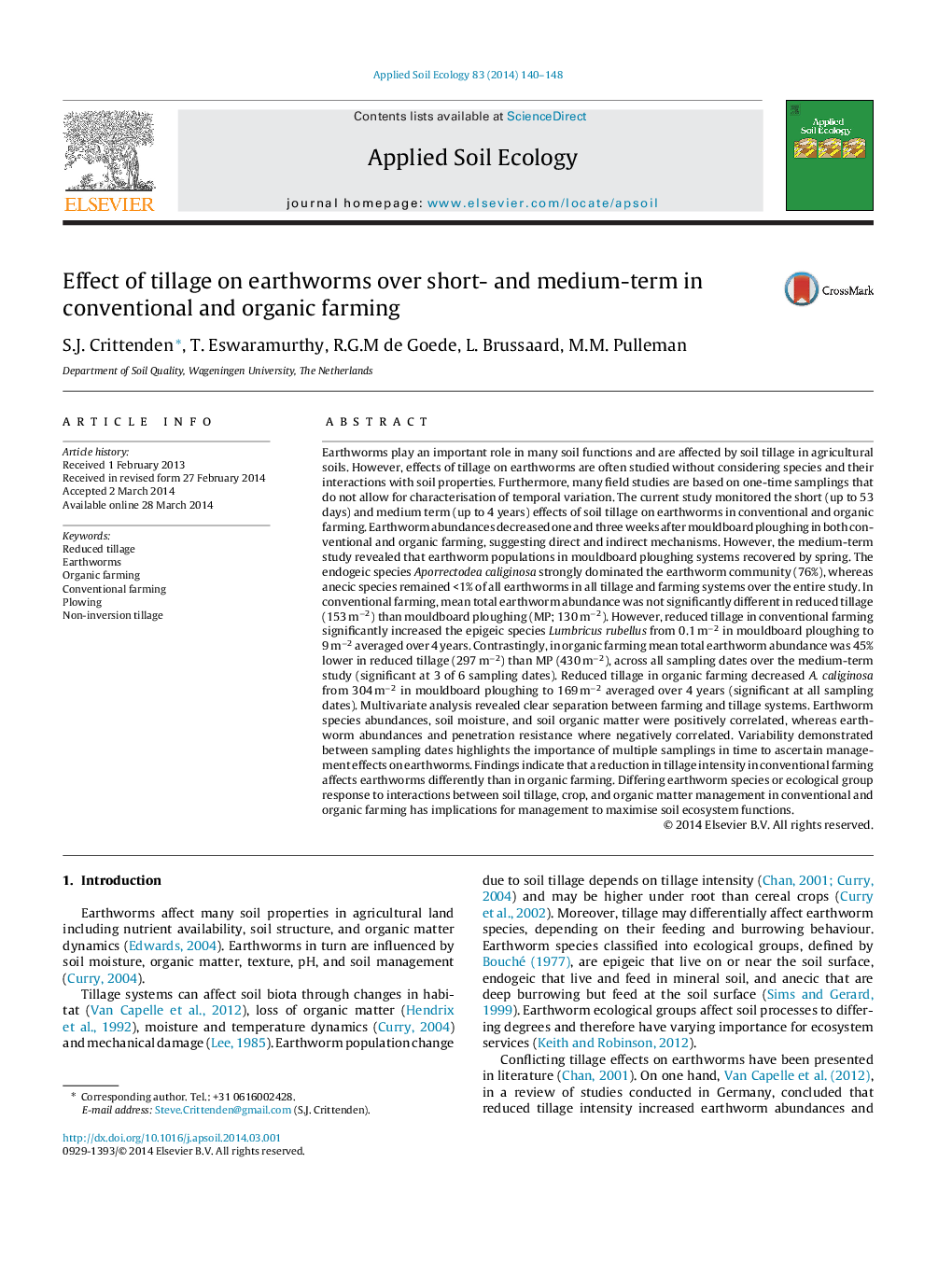| Article ID | Journal | Published Year | Pages | File Type |
|---|---|---|---|---|
| 4382211 | Applied Soil Ecology | 2014 | 9 Pages |
•Mouldboard ploughing negatively affected earthworm abundances in short term.•Earthworm populations in mouldboard ploughing recuperated by the following spring.•In medium term, reduced tillage in organic farming decreased A. caliginosa.•In medium term, reduced tillage in conventional farming increased L. rubellus.
Earthworms play an important role in many soil functions and are affected by soil tillage in agricultural soils. However, effects of tillage on earthworms are often studied without considering species and their interactions with soil properties. Furthermore, many field studies are based on one-time samplings that do not allow for characterisation of temporal variation. The current study monitored the short (up to 53 days) and medium term (up to 4 years) effects of soil tillage on earthworms in conventional and organic farming. Earthworm abundances decreased one and three weeks after mouldboard ploughing in both conventional and organic farming, suggesting direct and indirect mechanisms. However, the medium-term study revealed that earthworm populations in mouldboard ploughing systems recovered by spring. The endogeic species Aporrectodea caliginosa strongly dominated the earthworm community (76%), whereas anecic species remained <1% of all earthworms in all tillage and farming systems over the entire study. In conventional farming, mean total earthworm abundance was not significantly different in reduced tillage (153 m−2) than mouldboard ploughing (MP; 130 m−2). However, reduced tillage in conventional farming significantly increased the epigeic species Lumbricus rubellus from 0.1 m−2 in mouldboard ploughing to 9 m−2 averaged over 4 years. Contrastingly, in organic farming mean total earthworm abundance was 45% lower in reduced tillage (297 m−2) than MP (430 m−2), across all sampling dates over the medium-term study (significant at 3 of 6 sampling dates). Reduced tillage in organic farming decreased A. caliginosa from 304 m−2 in mouldboard ploughing to 169 m−2 averaged over 4 years (significant at all sampling dates). Multivariate analysis revealed clear separation between farming and tillage systems. Earthworm species abundances, soil moisture, and soil organic matter were positively correlated, whereas earthworm abundances and penetration resistance where negatively correlated. Variability demonstrated between sampling dates highlights the importance of multiple samplings in time to ascertain management effects on earthworms. Findings indicate that a reduction in tillage intensity in conventional farming affects earthworms differently than in organic farming. Differing earthworm species or ecological group response to interactions between soil tillage, crop, and organic matter management in conventional and organic farming has implications for management to maximise soil ecosystem functions.
